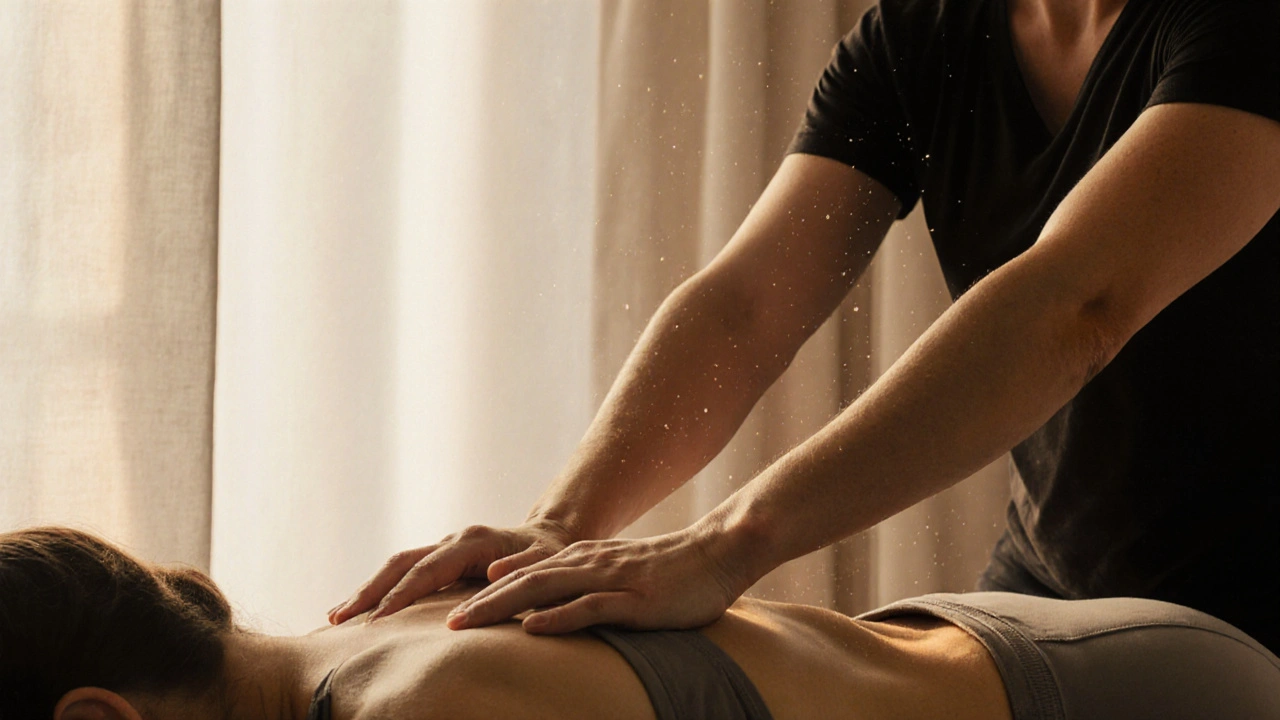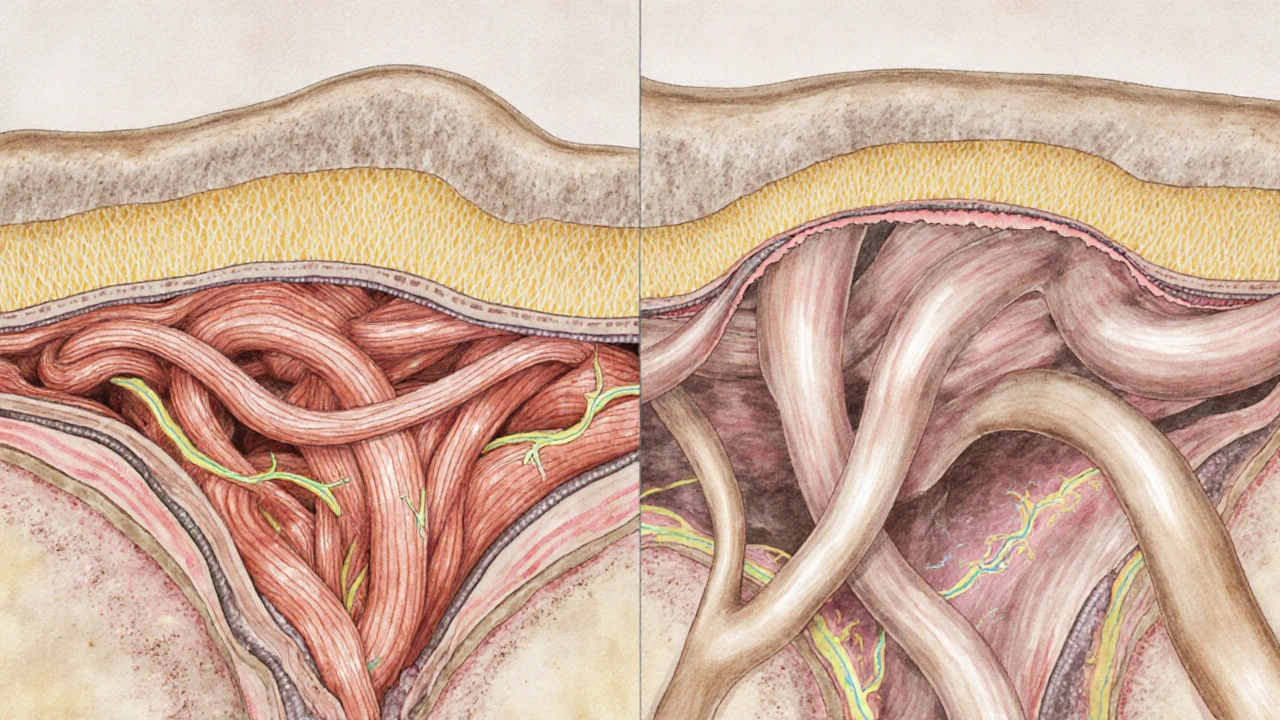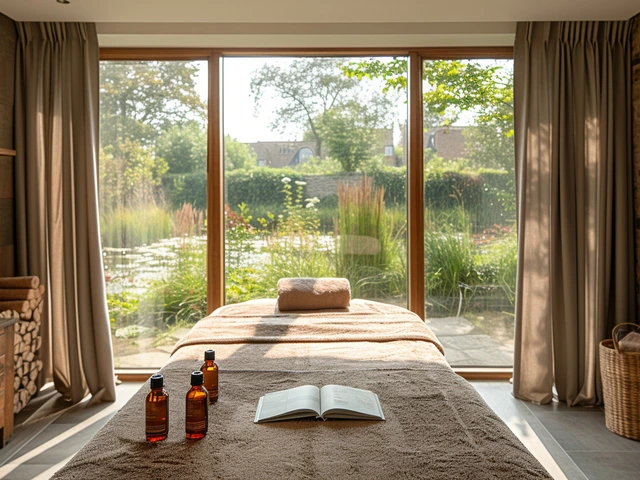Unlocking the Mysteries of Hellerwork Bodywork Therapy

Hellerwork Cost Calculator
Estimate Your Hellerwork Session Costs
Hellerwork therapy typically involves a 11-session series. Enter the number of sessions to calculate your estimated total cost. In Australia, single sessions range from $150-$220, with the full series costing $1,500-$2,200.
Estimated Total Cost
$0
Per Session
$0
Have you ever felt like your body is holding onto stress you don’t even remember? Like your shoulders are permanently raised, your hips are stuck, or your posture just won’t reset-even after years of stretching, yoga, or massages? If so, you’re not broken. You might just need something deeper than a routine rubdown. Enter Hellerwork: a form of bodywork therapy that doesn’t just relax muscles-it rewires how your body moves, stands, and breathes.
What Exactly Is Hellerwork?
Hellerwork is a structured system of bodywork and movement education developed by Dr. Joseph Heller in the 1970s. It’s not just massage. It’s not just stretching. It’s a blend of deep tissue manipulation, conscious movement retraining, and verbal dialogue designed to realign your body with gravity. Think of it as structural integration with a human touch.
The core idea? Your body is made of connective tissue called fascia a web-like network of collagen and elastin that surrounds muscles, bones, and organs. When you experience trauma, stress, or poor posture over time, this fascia tightens, twists, and locks into place. That’s why you might walk with one hip higher, or feel stiff after sitting for too long. Hellerwork targets those restrictions directly.
Unlike traditional massage that focuses on temporary relief, Hellerwork aims for lasting structural change. Sessions are usually done in a series of 11, each building on the last. It’s not a quick fix-it’s a rebuild.
How Does It Work?
The 11-session series is the backbone of Hellerwork. Each session focuses on a different area of the body, progressing from the feet up to the head. Here’s how it breaks down:
- Session 1-3: Surface Layers - Work begins with the outermost layers of fascia. The practitioner uses slow, deep pressure to release tension in the skin, fat, and superficial muscle layers. This prepares the body for deeper work.
- Session 4-7: Core Alignment - Focus shifts to the deeper connective tissues around the spine, pelvis, and ribs. This is where realignment happens. You’ll start noticing how your shoulders sit differently, or how your breath flows more freely.
- Session 8-11: Integration - The body is now more balanced, so movement education takes center stage. You’ll learn how to stand, walk, and sit in ways that support your new structure. No more slouching without realizing it.
Each session lasts about 75 to 90 minutes. The practitioner doesn’t just work on you-they talk with you. They ask questions like: “Where do you hold your stress?” or “What happens when you breathe deeply?” This dialogue helps connect physical changes to emotional patterns.
Who Benefits Most From Hellerwork?
Hellerwork isn’t for everyone-but it’s life-changing for the right people.
- Chronic pain sufferers - People with lower back pain, sciatica, or neck tension often find relief where other therapies failed. The release of fascial adhesions reduces nerve compression.
- Post-injury or post-surgery clients - After car accidents, surgeries, or sports injuries, scar tissue can pull the body out of alignment. Hellerwork helps restore natural movement patterns.
- Professional athletes and dancers - They use it to fine-tune biomechanics. A runner might discover their knee pain comes from a twisted pelvis, not weak quads.
- People feeling emotionally stuck - Many report feeling lighter, more grounded, or even emotionally released after sessions. The body stores trauma. Releasing fascia can unlock buried emotions.
One woman in Perth, a 52-year-old office worker with ten years of chronic shoulder pain, tried everything: physio, acupuncture, chiropractic care. Nothing lasted. After her third Hellerwork session, she could finally lift her arm overhead without pain. She didn’t just get relief-she got her life back.
What Makes It Different From Rolfing?
Hellerwork and Rolfing are often confused. Both are forms of structural integration. But here’s the key difference:
| Feature | Hellerwork | Rolfing |
|---|---|---|
| Number of sessions | 11 | 10 or 11 |
| Focus | Body alignment + movement education + emotional dialogue | Primarily physical alignment |
| Practitioner approach | Conversational, collaborative | More technical, less emphasis on talk |
| Emphasis on breath | Core component | Secondary |
| Training certification | International Hellerwork Guild | Rolf Institute |
Hellerwork adds the missing piece: awareness. You don’t just *get* aligned-you learn how to stay aligned. That’s why many people say Hellerwork changes how they move for life.

What to Expect During a Session
First-time clients often worry it’ll hurt. It can be intense-but it shouldn’t be unbearable. Think of it like a deep stretch that feels good even when it’s hard.
You’ll lie on a massage table, fully clothed in comfortable, loose-fitting clothes. The practitioner uses their hands, elbows, knuckles, and sometimes forearms to apply pressure. It’s slow. Very slow. They might hold a spot for 30 seconds while you breathe. You might feel heat, tingling, or even a wave of emotion.
One common sensation? A sudden urge to cry. Or laugh. Or both. That’s normal. Fascia holds emotional memory. When it releases, so can old feelings.
After the session, you might feel a little wobbly. That’s your body recalibrating. Drink water. Walk slowly. Avoid heavy workouts for 24 hours.
Is Hellerwork Scientifically Backed?
Yes-though not always in the way you’d expect.
While large-scale clinical trials are limited, studies on fascia and myofascial release show clear benefits. A 2021 review in the Journal of Bodywork and Movement Therapies found that myofascial release techniques significantly reduced chronic low back pain and improved mobility in 82% of participants.
Neuroscience supports the mind-body link too. The fascial network is rich in sensory nerves-more than muscles. It’s now understood as a key part of your body’s nervous system. When fascia tightens, it sends constant stress signals to your brain. Releasing it literally lowers your body’s alarm system.
Hellerwork isn’t magic. It’s biomechanics. It’s neurology. It’s psychology. All wrapped into one.
How to Find a Qualified Practitioner
Not everyone who calls themselves a bodyworker is trained in Hellerwork. Look for certification from the International Hellerwork Guild the official certifying body for Hellerwork practitioners worldwide.
Practitioners undergo 600+ hours of training, including anatomy, fascial anatomy, movement education, and ethics. In Australia, you’ll find certified practitioners in major cities like Perth, Melbourne, and Sydney. Check their website for credentials-anyone serious will list their certification number.
Avoid practitioners who promise instant results or skip the 11-session series. Hellerwork is a process. It’s not a one-off treatment.

Can You Do It at Home?
Some people try foam rolling or self-massage to mimic Hellerwork. It helps-but it’s not the same.
Why? Because Hellerwork requires a trained eye. A practitioner sees imbalances you can’t feel. They know where to apply pressure, how long to hold, and when to shift focus. Plus, the movement education part? That’s impossible to replicate alone.
That said, you can support your sessions. Practice mindful walking. Stand with your weight evenly distributed. Breathe into your belly. These small habits reinforce what you learn in therapy.
What Comes After the 11 Sessions?
After completing the series, most people don’t stop. They shift to maintenance. Some return every 3-6 months for a “tune-up.” Others take movement classes-yoga, tai chi, or Feldenkrais-to keep their body aligned.
One of the biggest surprises? People often report better sleep, improved focus, and even fewer headaches. That’s because when your body is aligned, your nervous system doesn’t have to work overtime just to keep you upright.
Hellerwork doesn’t promise miracles. But if you’re tired of treating symptoms and ready to fix the root, it might be the most honest therapy you’ve ever tried.
Is Hellerwork painful?
It can be intense, but it shouldn’t be unbearable. Practitioners work within your comfort zone. You’ll be asked to breathe through discomfort, not push through pain. Many describe it as a "good hurt"-like a deep stretch that releases something stuck.
How long do the results last?
Results are typically long-lasting because Hellerwork changes the structure of your fascia, not just the symptoms. Many people report improvements lasting years, especially if they maintain good posture and movement habits. Maintenance sessions every few months help sustain alignment.
Can Hellerwork help with anxiety?
Yes. Many clients report reduced anxiety after sessions. This isn’t coincidence. Tight fascia sends constant stress signals to the brain. Releasing those tensions lowers cortisol levels and activates the parasympathetic nervous system-the body’s rest-and-digest mode. It’s physical therapy with emotional side effects.
Do I need to be in good shape to try Hellerwork?
No. Hellerwork is adapted to all body types and fitness levels. Whether you’re an athlete, a desk worker, or recovering from surgery, practitioners tailor the pressure and movements to your needs. The goal is alignment, not strength.
How much does a Hellerwork session cost?
In Australia, a single session typically costs between $150 and $220. The full 11-session series usually ranges from $1,500 to $2,200. Some practitioners offer payment plans. Health insurance rarely covers it, but it’s worth checking with your provider.
Next Steps
If you’re curious, book a single session. Not to commit-to explore. See how your body responds. Many people walk in skeptical and walk out amazed. You might not need all 11 sessions. But you might need more than you think.
Don’t wait until you’re in constant pain. Your body’s been talking. Maybe it’s time to listen.





